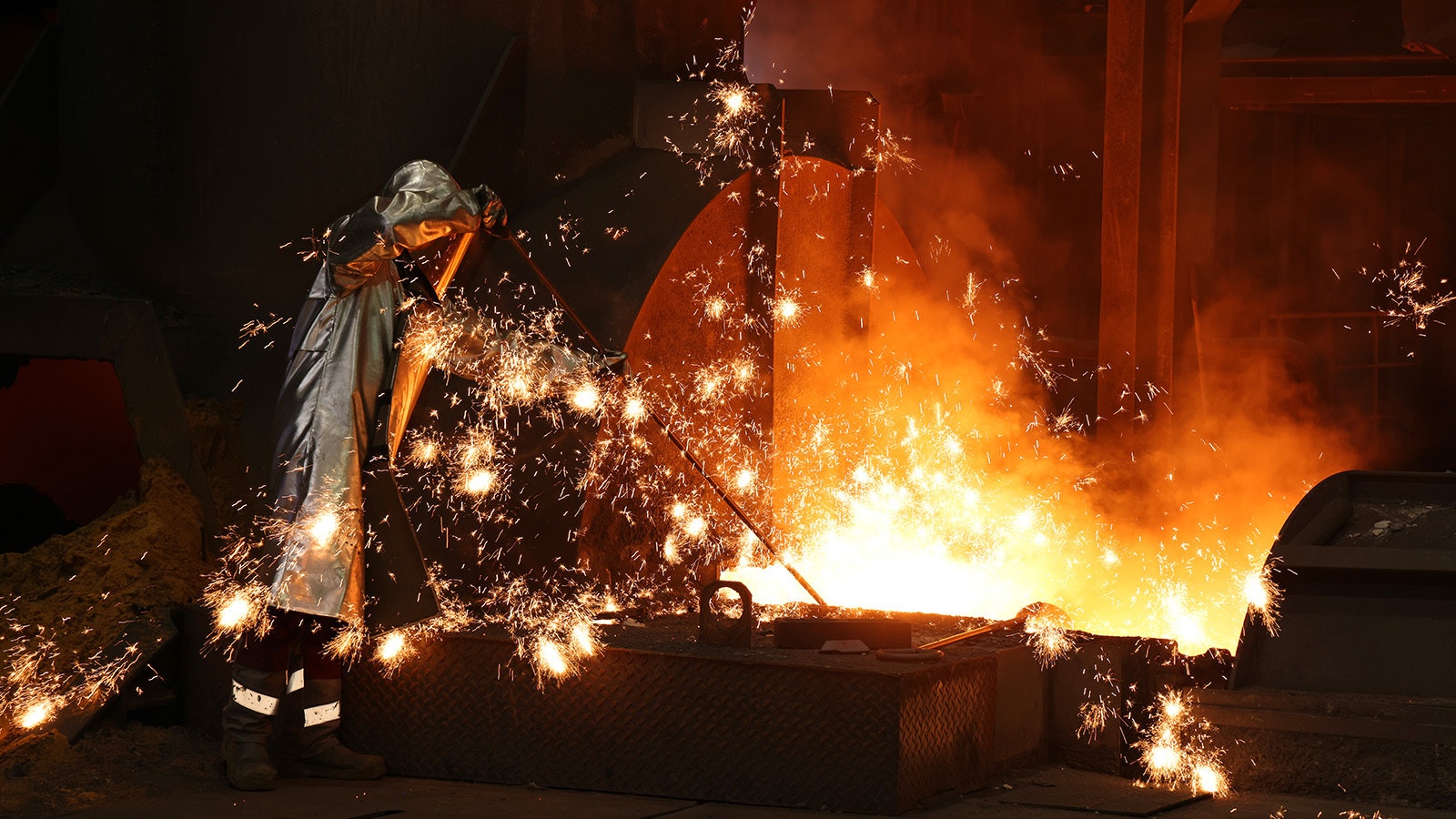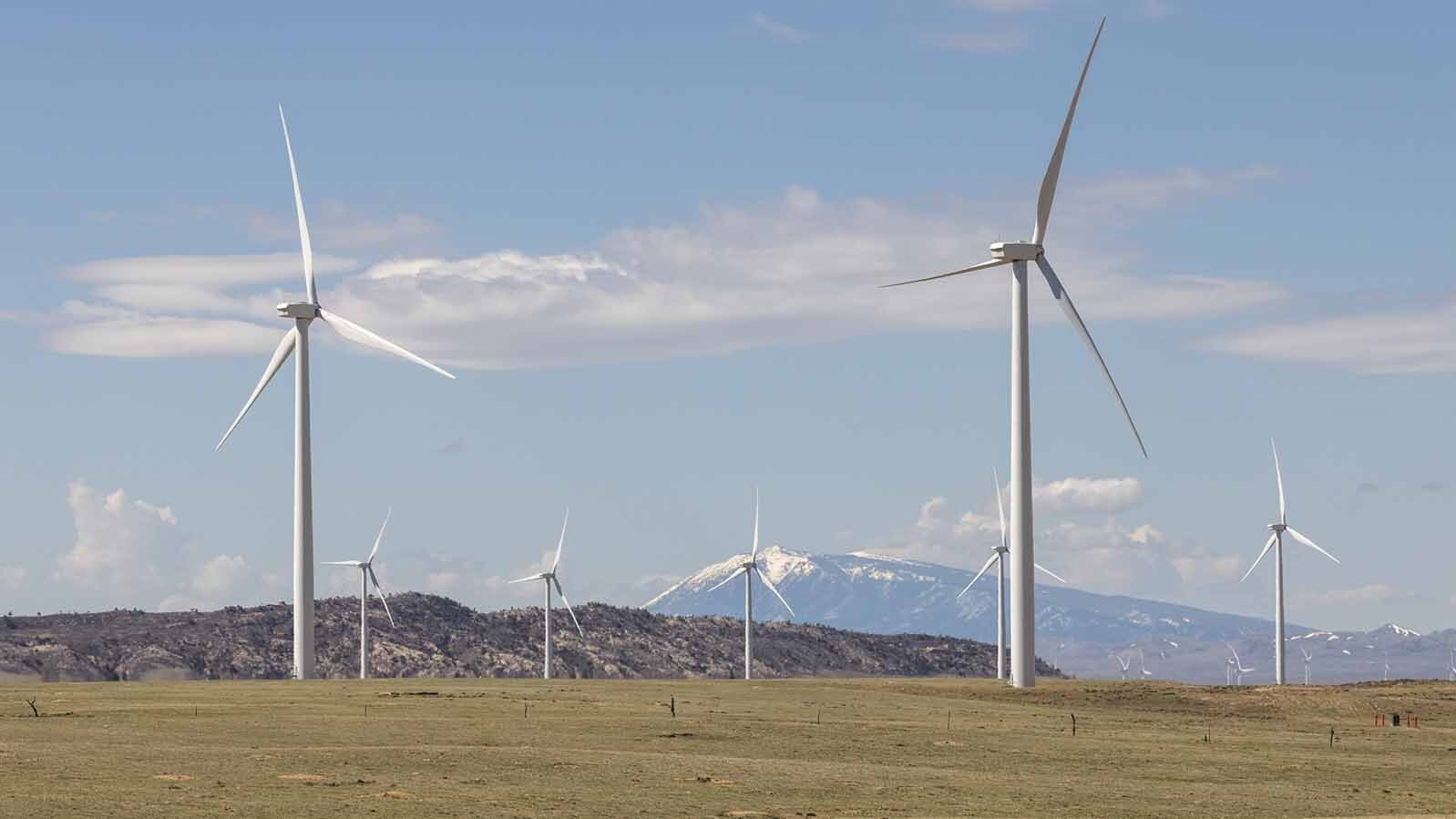A Wyoming map of carbon dioxide emissions in the state shows what one would expect to be the primary sources of greenhouse gasses – coal mines, coal-fired power plants, oil refineries and airports.
There’s one exception.
According to Climate Trace, the Laramie cement plant produces 792,000 tons of carbon dioxide, about the same as the Rapid City cement plant in South Dakota.
While there are efforts to shut down coal-fired power plants and replace them with non-carbon energy sources, it would be virtually impossible to power a cement plant with wind and solar. The same is true of plastics, ammonia and steel, all necessary for modern civilization, and all require the burning of fossil fuels to produce.
“There’s no credible path, no physical chemistry or energetics, to significantly replace that energy” with non-carbon sources, Mark P. Mills, senior fellow at the Manhattan Institute, told Cowboy State Daily.
Pillars Of Civilization
Vaclav Smil, distinguished professor emeritus at the University of Manitoba, explains in his new book “How the World Really Works,” that modern societies require the four pillars of civilization: cement, steel, plastics and ammonia.
• Ammonia is the basis for all nitrogen fertilizers. Without the food produced with modern fertilizers, billions of people would starve.
• Plastics are found in everything from computers to furniture to clothes. As Smil explains in his book, they are also indispensable in nearly every aspect of health care — from incubators to artificial hearts.
• Without steel, there would be no skyscrapers or cars – including electric vehicles.
• Cement is the key ingredient in concrete, without which there are no modern cities, tunnels, dams, roads, runways or ports.
No viable replacement exists for these materials, at least not in the near future or on a global scale, Smil explains.
Hiding Inefficiencies
According to the Energy Information Administration, wind and solar combined produced more than 10% of the electricity in the U.S. in 2021. Including other renewable sources, such as hydroelectric, the number tops 20%.
These numbers, however, are only for electricity, which accounts for about 20% of the total energy the world uses. The rest of the energy consumed by the globe’s population is used to power transportation and industry.
While the heat needed to power industry could be produced with electricity from wind and sun, it would be highly inefficient and the cost of everything would go up dramatically.
Mills said if that was the only problem, governments would merely disguise the costs with tax incentives and other subsidies.
“An electric car battery is a very inefficient way to store energy compared to storing gasoline or diesel fuel,” he said. “But you just subsidized the hell out of it and you hide the inefficiencies.”
Mills said such an approach ends up devastating economies and drives up costs. It’s happening in Europe.
De-Industrialization
Europe had gone much further in its pursuit of renewable energy than the U.S., and it’s done much more to restrict domestic production of fossil fuels.
After the Ukraine invasion cut Europe off from Russian oil and gas, European industry began to suffer.
Last month, Reuters reported that Germany industry is paying 40% more for energy this year than in 2021. Liberty Steel UK announced restructuring plans in January to reduce steelmaking and mothball some of its assets. High energy costs were among the reasons cited.
Bloomberg reported in December that Britain’s ceramics industries were facing a 10-fold increase in energy prices and may have to shut down. According to Brietbart, Belgium glass blowers are scaling back production. French bakers are also protesting the impact of energy costs on their businesses.
“In Britain, they’re telling people that they should stop bathing or they should shower with a friend. This stuff sounds funny, but it’s serious,” said energy and environmental policy expert Steve Goreham.
About 70% of Europe’s fertilizer industries have shut down, he said, and more than half of the aluminum and zinc facilities are closed. At current energy prices, it takes a European aluminum plant twice as much money to pay for the electricity than the value of the product it produces.
The Other Problem
However, it’s not just inefficient to produce electricity to create the heat needed for heavy industry, as opposed to burning fossil fuels directly.
Even if you can produce enough energy from carbon-free sources, Mills said, the processes themselves don’t work without fossil fuels. Metallurgical coal is needed to make steel.
“You have to use hydrocarbons to manufacture certain things. It’s the chemical constituents themselves that are important,” Mills said.
Goreham, who holds an MBA from the University of Chicago and a Master of Science in Electrical Engineering from the University of Illinois, explained that globally, 2 billion tons of steel is produced.
It’s made from iron ore, which is an iron oxide. To get the iron out of the oxide, steel plants use coking coal, which produces carbon monoxide. The carbon monoxide, he explained, cleaves the oxygen off the iron.
To put it simply, it’s not just heat that’s needed to make steel, but a chemical process that requires hydrocarbons.
Hydrogen Pathway
Goreham is expecting to release his fourth book, “Green Breakdown: The Coming Renewable Energy Failure,” this summer. He dedicates a chapter to exploring the challenge of decarbonizing heavy industry.
The International Energy Agency proposes hydrogen as a means to accomplish this. Goreham said when you pencil out the numbers, it’s astounding what that would take.
Hydrogen can be made from natural gas, and most is. It also can be made from coal.
You need energy to make hydrogen, which adds its own inefficiencies. To make what’s called “green” hydrogen, you take electricity from wind and solar farms to split water molecules and separate the hydrogen out with a process called electrolysis.
The average steel plant produces 4 million tons of steel per year. To make enough hydrogen for a single steel plant, Goreham said, you’d need to produce about 5 gigawatts of electricity from wind and solar.
The Chokecherry and Sierra Madre Wind Energy project in Carbon County will produce 3 gigawatts with 600 turbines over 1,500 acres when it’s fully constructed. So, using those numbers, to produce enough green hydrogen for one steel plant of average size, you’d need 1,000 turbines over 2,400 acres dedicated to nothing else than producing enough hydrogen for that one plant.
Since wind farms don’t produce electricity all the time, you’d need to double or triple the number of turbines to run a steel plant 24/7.
“The numbers are really astronomical,” Goreham said.
Reasonable Path
Mills said there’s some potential for using high-temperature, gas-cooled nuclear reactors to replace some of that heavy industrial energy.
“It’s certainly a perfectly reasonable path for those kinds of applications where it’s only a temperature question. It’s not always a temperature question,” Mills said, though it wouldn’t happen overnight.
Goreham said that nuclear plants could theoretically be used for the electrolysis to produce hydrogen, but decarbonizing the world’s steel production would need about 600 more nuclear power plants. There are about 437 operating in the world today.
Goreham said the world is eventually going to have to come to its senses when it comes to the challenges that come with eliminating fossil fuels.
“We’re going to see a renewable energy breakdown,” Goreham said. “It’s going to take two or three decades for people to go back to what is sensible. The world is so obsessed with this carbon-dioxide elimination program. But the breakdown will come, I am predicting.”





